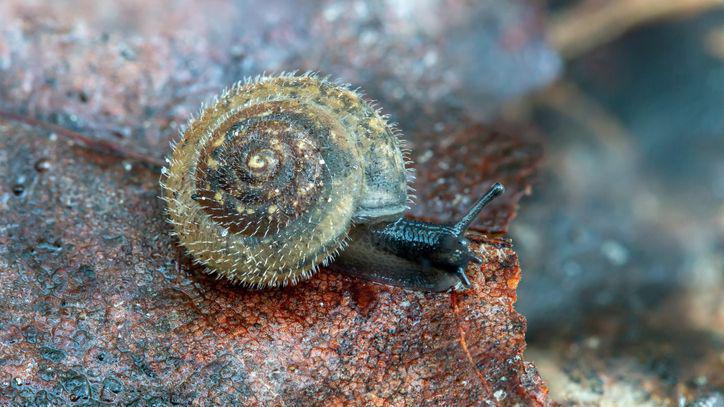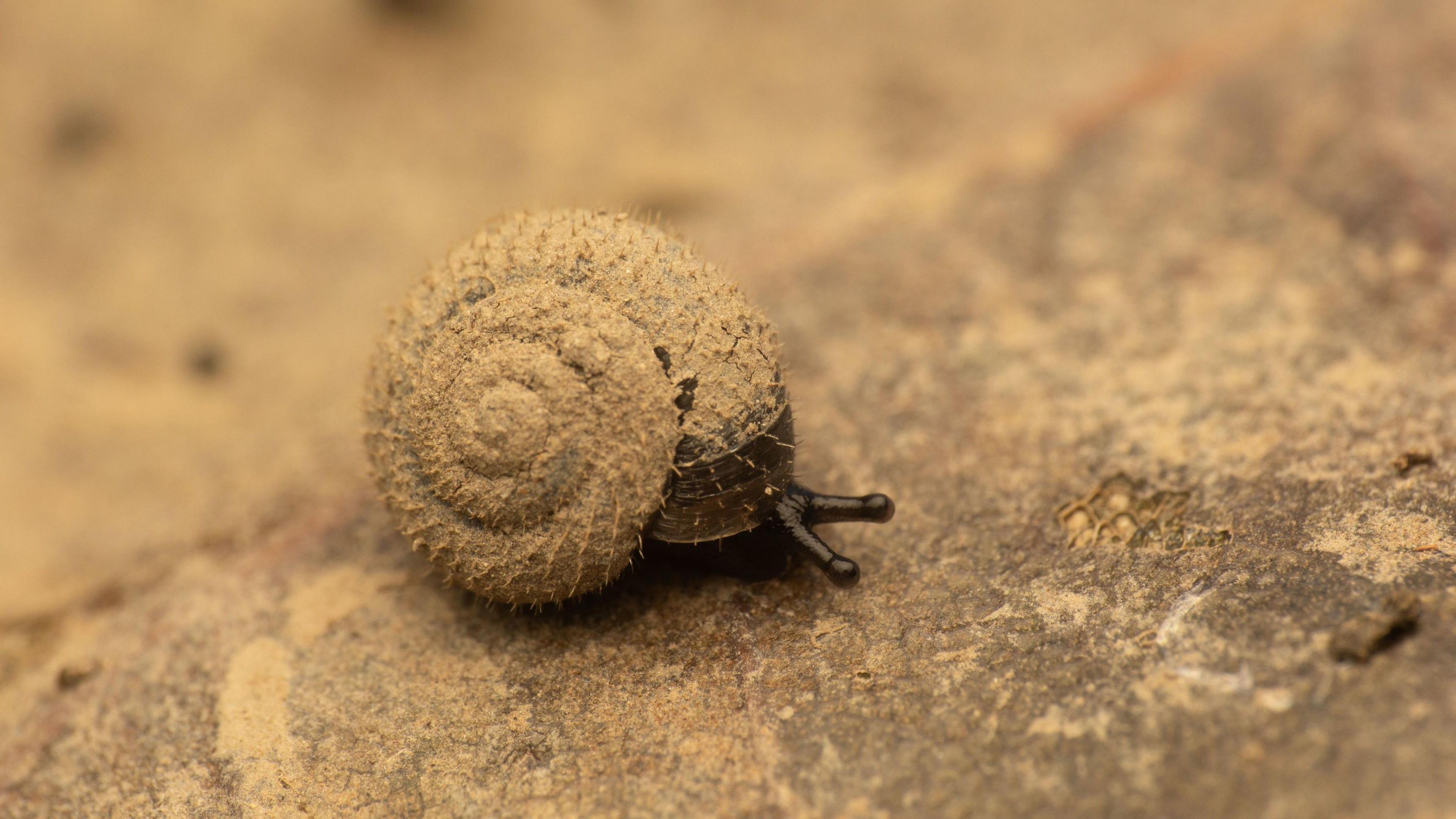Race to rescue London's rare hairy snail

Fine hairs on the shell are thought to allow the snail to sweat off moisture
- Published
Conservationists and citizen scientists have joined forces for a project to save London's "charming little" ice-age hairy snail.
Named the German hairy snail because of tiny hairs that cover its shell and because it is believed to originally come from the continent, the rare species is one of the UK's most endangered molluscs.
The finger-sized animal (Pseudotrichia rubiginosa) can be found only in small, fragmented patches of its historic damp riverside habitat along the River Thames.
The team, led by Citizen Zoo and Zoological Society of London (ZSL), has started a series of surveys to better understand the species' distribution across the capital and inform conservation action.
Taking place over the last couple of months, the team has been searching and identifying species at both known and potential river sites in boroughs such as Newham, Richmond upon Thames and Barnet.
The team hopes to then build a stronger picture of the snail's current UK range, and identify how habitat restoration, pollution management and the careful movement of snails between sites can help recover their numbers.
Joe Pecorelli, freshwater conservation programme manager at ZSL, said: "This charming little snail has called our riverbanks and wetlands home for thousands of years - yet it is sadly now very rare in the UK, potentially restricted to just a few sites along the Thames."

The German hairy snail is listed as a priority species for conservation efforts in the London biodiversity action plan
Although first recorded in the UK in 1982, fossilised remains indicate that the German hairy snail has called the UK home since at least the Stone Age - and potentially even as far back at the last Ice Age, when Britain was still joined to mainland Europe.
During this period, the Thames was still connected to the Rhine - Germany's longest river - which today empties into the North Sea.
Mr Pecorelli said: "These surveys will help us understand how the snail is faring and how we can protect it - not only securing their future for years to come, but also helping safeguard green spaces throughout London for people and wildlife for future generations."
The team hopes to then build a stronger picture of the snail's current UK range, and identify how habitat restoration, pollution management and the careful movement of snails between sites can help recover their numbers.
The fine hairs that run along the slim, round shell are thought to allow the snail to sweat off moisture, helping to make its slime sticky enough for it to cling to the slippery riverside debris and the plants it feeds on.
More on conservation in London
Celebrities' turtles star in London art trail
- Published16 July
Does London need a delivery of white storks?
- Published4 August
Westminster Abbey's quest to save swifts
- Published28 September
Elliot Newton, director of rewilding at Citizen Zoo, said: "The German hairy snail is a species that helps spark imagination and open people's minds to the curious and diverse wildlife that can thrive across Greater London.
"It reminds us of the remarkable natural world that exists right on our doorstep.
"The surveys show how, by working together across the capital with many partners and empowering local communities, we can gain a deeper understanding of London's more hidden biodiversity and take steps to protect it."
The project is running in partnership with London Wildlife Trust, the Conchological Society of Great Britain and Ireland, Greenspace Information for Greater London CIC and the Port of London Authority, and with funding support from Thames21 and the Conchological Society of Great Britain and Ireland.
Listen to the best of BBC Radio London on Sounds and follow BBC London on Facebook, external, X, external and Instagram, external. Send your story ideas to hello.bbclondon@bbc.co.uk, external